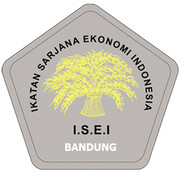Reformulation of State Defense Policy Management Based on AI Technology for Decision Making in State Defense
Abstract
Keywords
Full Text:
PDFReferences
Aldossary, R. S., Almutairi, M. N., & Dursun, S. (2023). Personal protective equipment detection using computer vision techniques. Society of Petroleum Engineers – Gas and Oil Technology Showcase and Conference (GOTS 2023). https://doi.org/10.2118/214093-MS
Arreguín-Toft, I. (2001). How the weak win wars: A theory of asymmetric conflict. International Security, 26(1), 93–128. https://doi.org/10.2307/3092079
Ashfaq, S., Chandre, P., Pathan, S., Mande, U., Nimbalkar, M., & Mahalle, P. (2024). Defending against vishing attacks: A comprehensive review for prevention and mitigation techniques. In N. R. Roy, A. S. Bhuvana, & S. Salahdine (Eds.), Cyber Security and Digital Forensics (Vol. 896, pp. 411–422). Springer. https://doi.org/10.1007/978-981-99-9811-1_33
Ayub Khan, A., Ali Laghari, A., Rashid, M., Li, H., Rehman Javed, A., & Reddy Gadekallu, T. (2023). Artificial intelligence and blockchain technology for secure smart grid and power distribution automation: A state-of-the-art review. Sustainable Energy Technologies and Assessments, 57, 103282. https://doi.org/10.1016/j.seta.2023.103282
Beusmans, J., & Wieckert, K. (1989). Computing, research, and war: If knowledge is power, where is responsibility? Communications of the ACM, 32(8), 939–951. https://doi.org/10.1145/65971.65973
Biddle, S. (2004). Military power: Explaining victory and defeat in modern battle. Princeton University Press.
Boot, M. (2006). War made new: Weapons, warriors, and the making of the modern world. Gotham Books.
Broglio, S. P., McCrea, M., McAllister, T., Harezlak, J., Katz, B., Hack, D., ... & Dykhuizen, B. H. (2017). A national study on the effects of concussion in collegiate athletes and US military service academy members: The NCAA–DoD Concussion Assessment, Research and Education (CARE) Consortium structure and methods. Sports Medicine, 47(7), 1437–1451. https://doi.org/10.1007/s40279-017-0707-1
Brown-Gaston, R. D., & Arora, A. S. (2021). War and peace: Ethical challenges and risks in military robotics. International Journal of Intelligent Information Technologies, 17(3), 1–12. https://doi.org/10.4018/IJIIT.2021070101
Brubaker, R. (2004). In the name of the nation: Reflections on nationalism and patriotism. Citizenship Studies, 8(2), 115–127. https://doi.org/10.1080/1362102042000214705
Clausewitz, C. von. (1984). On war (M. Howard & P. Paret, Eds. & Trans.). Princeton University Press.
Crumpacker, J. B., Robbins, M. J., & Jenkins, P. R. (2022). An approximate dynamic programming approach for solving an air combat maneuvering problem. Expert Systems with Applications, 203, 117448. https://doi.org/10.1016/j.eswa.2022.117448
Dressler, J. C., Bronk, C., & Wallach, D. S. (2015). Exploiting military OpSec through open-source vulnerabilities. IEEE Military Communications Conference (MILCOM), 450–458. https://doi.org/10.1109/MILCOM.2015.7357484
Echevarria II, A. J. (2007). Clausewitz and contemporary war. Oxford University Press.
Firlej, M., & Taeihagh, A. (2021). Regulating human control over autonomous systems. Regulation and Governance, 15(4), 1071–1091. https://doi.org/10.1111/rego.12344
Gottemoeller, R., Hedgecock, K., Magula, J., & Poast, P. (2022). Engaging with emerged and emerging domains: Cyber, space, and technology in the 2022 NATO strategic concept. Defence Studies, 22(3), 516–524. https://doi.org/10.1080/14702436.2022.2082955
Gray, C. S. (1999). Modern strategy. Oxford University Press.
Guice, J. (1998). Controversy and the state: Lord ARPA and intelligent computing. Social Studies of Science, 28(1), 103–138. https://doi.org/10.1177/030631298028001004
Handel, M. I. (2001). Masters of war: Classical strategic thought. Frank Cass.
Huang, L., Fu, M., Qu, H., Wang, S., & Hu, S. (2021). A deep reinforcement learning-based method applied for solving multi-agent defense and attack problems. Expert Systems with Applications, 176, 114896. https://doi.org/10.1016/j.eswa.2021.114896
Johnson, J. (2022). Delegating strategic decision-making to machines: Dr. Strangelove redux? Journal of Strategic Studies, 45(3), 439–477. https://doi.org/10.1080/01402390.2020.1759038
Kaldor, M. (2012). New and old wars: Organized violence in a global era (3rd ed.). Polity Press.
Khaleel, Y. L., Habeeb, M. A., Albahri, A. S., Al-Quraishi, T., Albahri, O. S., & Alamoodi, A. H. (2024). Network and cybersecurity applications of defense in adversarial attacks: A state-of-the-art using machine learning and deep learning methods. Journal of Intelligent Systems, 33(1), Article 20240153. https://doi.org/10.1515/jisys-2024-0153
Luttwak, E. N. (2001). Strategy: The logic of war and peace (Rev. & enlarged ed.). Belknap Press.
Mahoney, C. W. (2020). United States defence contractors and the future of military operations. Defense and Security Analysis, 36(2), 180–200. https://doi.org/10.1080/14751798.2020.1750182
Mearsheimer, J. J. (2001). The tragedy of great power politics. W. W. Norton & Company.
Muhati, E., & Rawat, D. B. (2021). Asynchronous advantage actor-critic (A3C) learning for cognitive network security. In Proceedings of the 2021 IEEE Conference on Trust, Privacy and Security in Intelligent Systems and Applications (pp. 106–113). IEEE. https://doi.org/10.1109/TPSISA52974.2021.00012
Navas-Camargo, F., & Ardila Castro, C. A. (2022). Cyberspace, artificial intelligence, and the domain of war: Ethical challenges and the guidelines proposed by the Latin American Development Bank. In J. Cayón Peña (Ed.), Security and Defence: Ethical and Legal Challenges in the Face of Current Conflicts (Advanced Sciences and Technologies for Security Applications, pp. 37–55). Springer. https://doi.org/10.1007/978-3-030-95939-5_3
Nye, J. S. (2004). Soft power: The means to success in world politics. PublicAffairs.
O’Hanlon, M. E. (2009). The science of war: Defense budgeting, military technology, logistics, and combat outcomes. Princeton University Press.
Pan, F., & Bao, H. (2021). Research progress of automatic driving control technology based on reinforcement learning. Journal of Image and Graphics, 26(1), 28–35. https://doi.org/10.11834/jig.200428
Pape, R. A. (1996). Bombing to win: Air power and coercion in war. Cornell University Press.
Posen, B. R. (1984). The sources of military doctrine: France, Britain, and Germany between the world wars. Cornell University Press.
Smith, R. (2005). The utility of force: The art of war in the modern world. Knopf.
Sun, Z., Piao, H., Yang, Z., Zhao, Y., Zhan, G., Zhou, D., ... & Lu, Y. (2021). Multi-agent hierarchical policy gradient for air combat tactics emergence via self-play. Engineering Applications of Artificial Intelligence, 98, 104112. https://doi.org/10.1016/j.engappai.2020.104112
Van Creveld, M. (1991). The transformation of war. Free Press.
Warden III, J. A. (1989). The air campaign: Planning for combat. National Defense University Press.
Watts, B. D. (2004). Clausewitzian friction and future war (Rev. ed.). National Defense University Press.
Whyte, C. (2020). Problems of poison: New paradigms and “agreed” competition in the era of AI-enabled cyber operations. In Proceedings of the 2020 International Conference on Cyber Conflict (CyCon) (pp. 215–232). IEEE. https://doi.org/10.23919/CyCon49761.2020.9131717
Yaozhong, Z., Zhuoran, W., Zhenkai, X., & Long, C. (2023). A UAV collaborative defense scheme driven by DDPG algorithm. Journal of Systems Engineering and Electronics, 34(5), 1211–1224. https://doi.org/10.23919/JSEE.2023.000128
Yarger, H. R. (2006). Strategic theory for the 21st century: The little book on big strategy. Strategic Studies Institute.
DOI: https://doi.org/10.17509/image.2025.008
Refbacks
- There are currently no refbacks.
Copyright (c) 2025 Widiyanto Saputro, Asep Adang Supriyadi, Guntur Eko

This work is licensed under a Creative Commons Attribution-ShareAlike 4.0 International License.
Image : Jurnal Riset Manajemen is licensed under a Creative Commons Attribution-ShareAlike 4.0 International License
View My Stats



